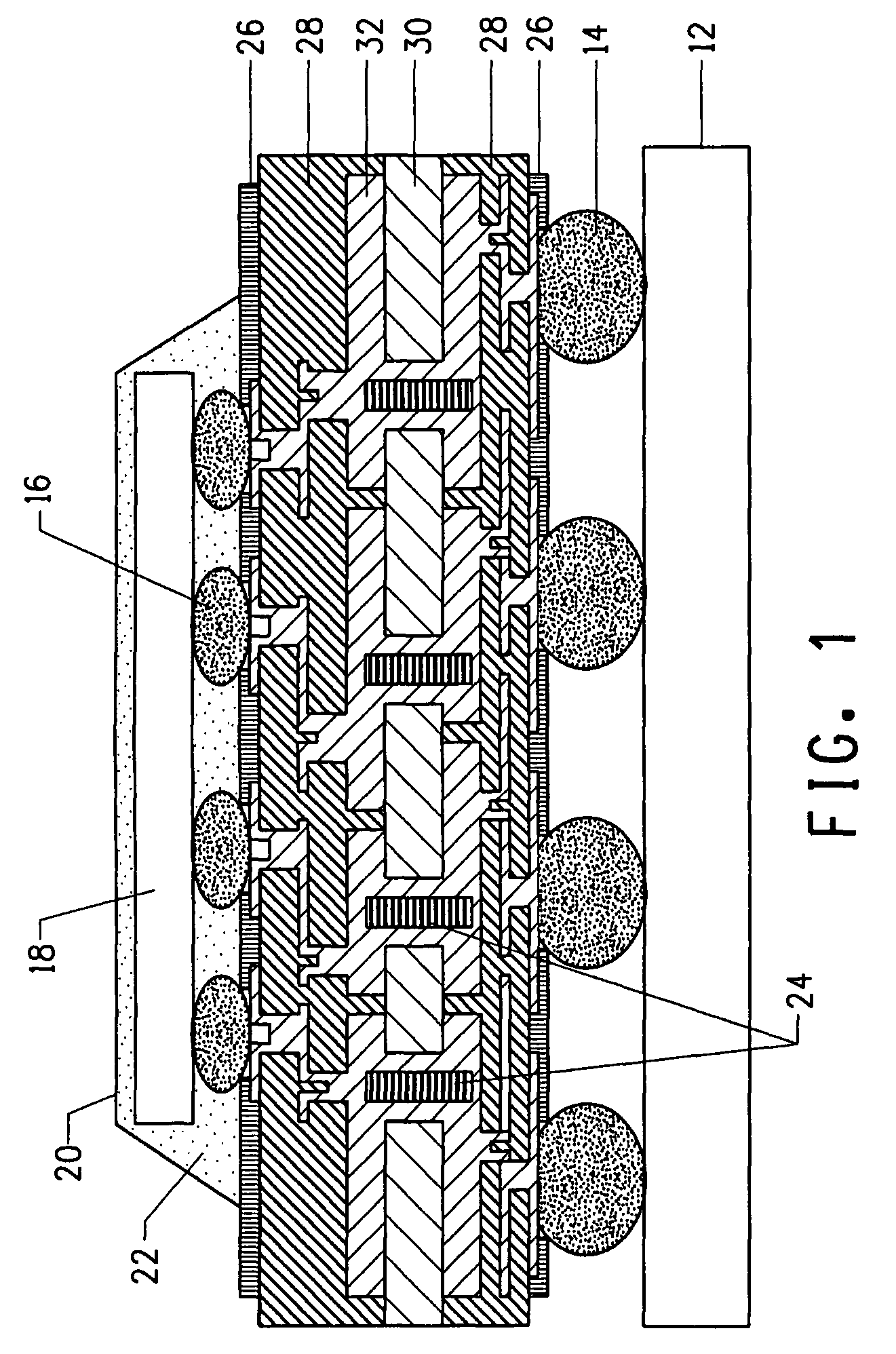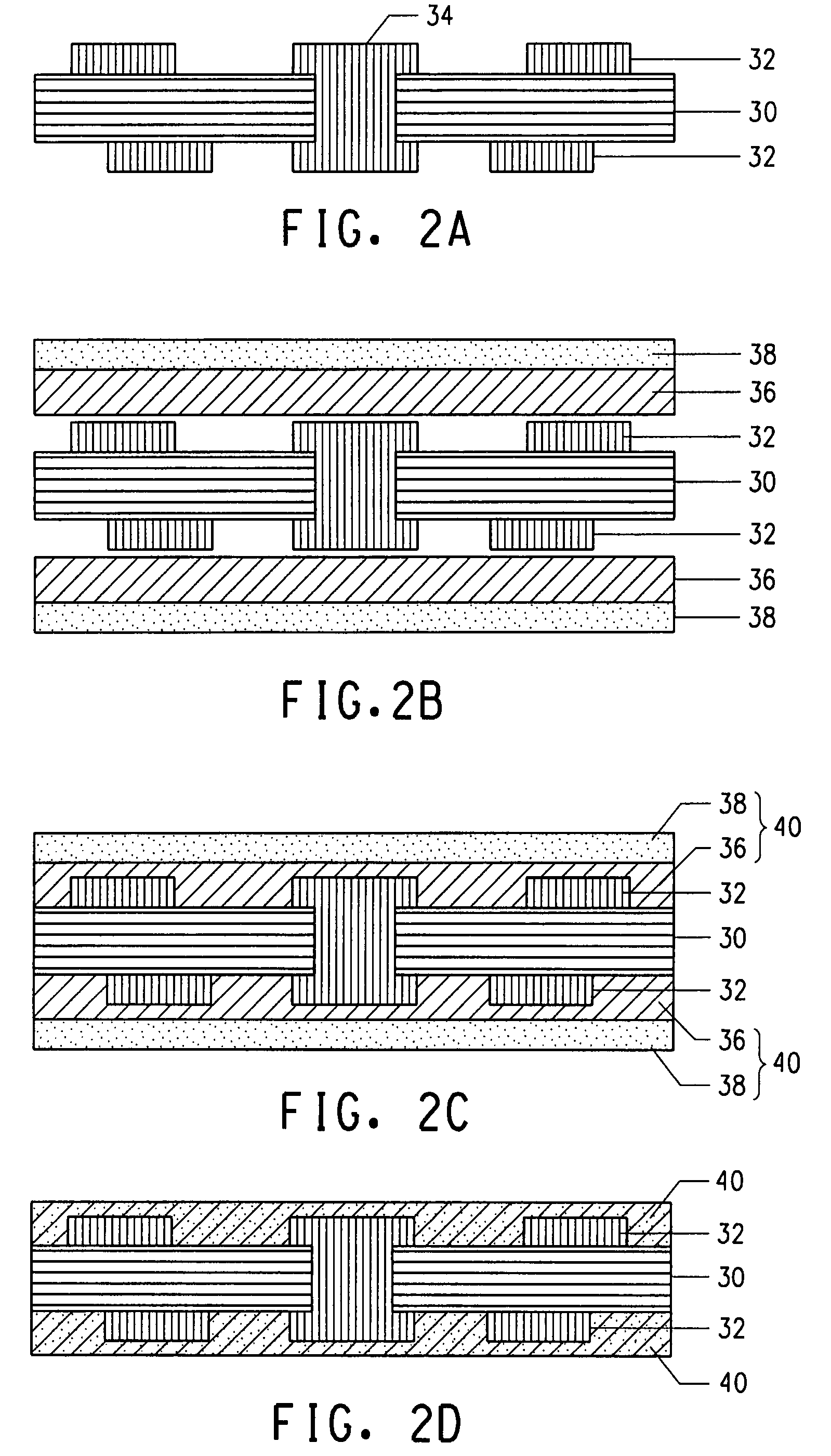Filled epoxy compositions
a technology of epoxy compositions and fillings, applied in the field of epoxy compositions, can solve the problems of increased viscosity, poor adhesion strength, and increased brittleness
- Summary
- Abstract
- Description
- Claims
- Application Information
AI Technical Summary
Problems solved by technology
Method used
Image
Examples
examples
Resin:
[0070]An o-cresol novolac epoxy combined with a phenolic hardener, was dissolved in MEK to form a 61.5% solids solution and used in the following examples. The phenolic hardener and the epoxy were mixed on the basis of their equivalent weights. The mix ratio of 0.9 equivalent of hardener to one equivalent of epoxy was used in all the examples. 2-Methyl imidazole was used as a catalyst, at 0.1 to 0.2 parts by weight per hundred parts of the combined epoxy resin and the hardener resin. The catalyst was added after mixing the epoxy, hardener and filler.
[0071]The thus filled epoxy composition was cured by heating at 140° C. for 3.5 min. followed by heating at 188° C. for 90 min under 300 psi pressure in a Vac-Q-Hot vacuum press (OEM Press Systems Inc, Fullerton, Calif.), under 29″ mercury vacuum. A control composition without filler was cured under the same conditions in the vacuum press but without any applied pressure.
Fillers:
[0072]A 12 weight-% dispersion in MEK of Aerosil R720...
example 1
[0088]To 21.1 g of the epoxy resin in MEK solution of Comparative Example 1 was added 29.9 g of the milled Aerosil R7200 dispersion in MEK containing 3.5 g of fumed silica and the mixture was stirred for 15 minutes. Then 3.5 g of SE1050-SEO silica was added in the powder form and stirred for 30 minutes. The combined dispersion was subjected to an ultrasonic probe mixing at room temperature for four minutes. Then 0.0169 g of the catalyst in 10 ml MEK solution was added to the dispersion and stirred for 30 minutes.
[0089]A 0.002 inch (50.8 micrometer) thick coating of the dielectric composition was cast on a PET film using a Gardco™ Film Applicator and allowed to dry for two hours at room temperature. The remaining solution was poured into a Teflon® coated pan and allowed to dry overnight at room temperature in the laboratory hood. The isolated viscous mass placed into a 2″×2″×0.060 inch (50.8×50.8×1.5 mm) stainless mold and cured under 300 psi (2.07 MPa) pressure.
[0090]In the dielectr...
example 2
[0092]While stirring, 21.1 g of the epoxy resin composition in MEK solution previously prepared was combined with 25.6 g of the 12% solids milled Aerosil R7200 silica dispersion containing 3 g of the fumed silica. Stirring was continued for 15 minutes. Separately 4 g of Cloisite 30B was dispersed in 60 ml of MEK by stirring at room temperature for an hour. The ultrasonic probe was applied to the Cloisite dispersion so prepared for about four minutes at room temperature to facilitate the dispersion in the solvent. The Cloisite dispersion was transferred immediately to the silica and epoxy resin dispersion prepared as herein above described, and the resulting mixture was stirred using a magentic stirrer for about 30 minutes. Then 0.0169 g of the catalyst in 10 ml of MEK was added to the dispersion and stirring was continued at room temperature for about 30 minutes further.
[0093]A 0.002 inch (ca. 50 micrometer) thick coating of the epoxy composition so prepared was cast on a PET film a...
PUM
| Property | Measurement | Unit |
|---|---|---|
| particle size | aaaaa | aaaaa |
| particle sizes | aaaaa | aaaaa |
| equivalent spherical diameter | aaaaa | aaaaa |
Abstract
Description
Claims
Application Information
 Login to View More
Login to View More - R&D
- Intellectual Property
- Life Sciences
- Materials
- Tech Scout
- Unparalleled Data Quality
- Higher Quality Content
- 60% Fewer Hallucinations
Browse by: Latest US Patents, China's latest patents, Technical Efficacy Thesaurus, Application Domain, Technology Topic, Popular Technical Reports.
© 2025 PatSnap. All rights reserved.Legal|Privacy policy|Modern Slavery Act Transparency Statement|Sitemap|About US| Contact US: help@patsnap.com



